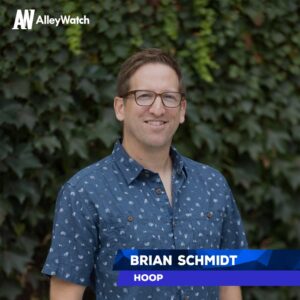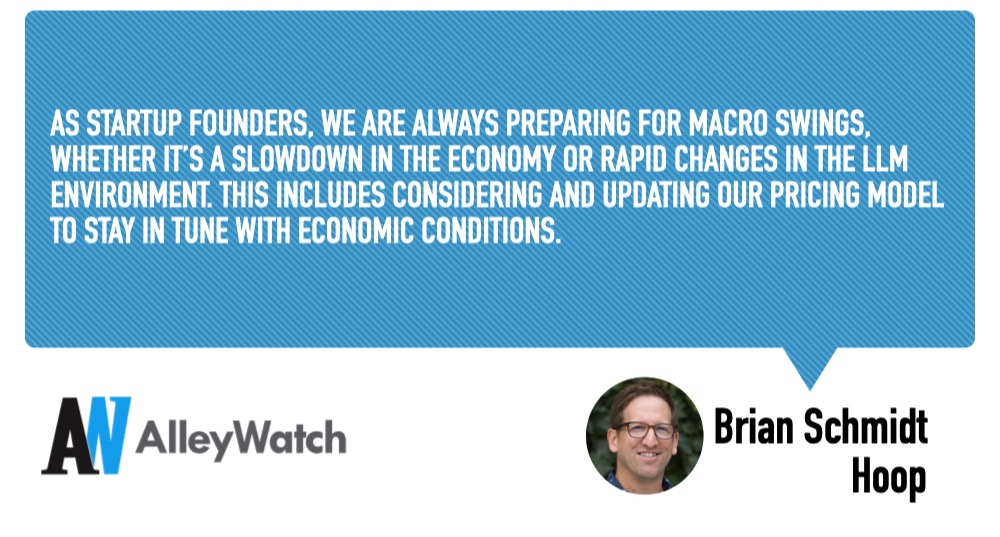In today’s digital workplace, the average company employs 354 distinct applications, and desk workers typically interact with 11 different applications daily to perform their duties. This multitude of app-based workflows generates a slew of additional tasks, leading to the cumbersome task of merging to-do lists from various sources, which ultimately saps productivity. Hoop is an AI-enhanced task management platform that streamlines the creation and updating of to-do lists throughout your technology stack. Founded by former Trello executives, the company is initially focused on simplifying task management from popular productivity tools like Google Meet, Slack, Zoom, and even email. With plans to broaden its integration capabilities, Hoop aspires to evolve into a comprehensive, centralized task aggregation tool. This smart system will autonomously generate and refresh tasks, liberating employees to concentrate on meaningful work instead of being bogged down by managing the ever-growing lists of pending tasks.
AlleyWatch caught up with Hoop Cofounder Brian Schmidt to learn more about the business, the company’s strategic plans, recent round of funding, and much, much more…
Who were your investors and how much did you raise?
We raised a $5M Seed round led by Index Ventures, with participation from Origin Ventures, Divergent Capital, and Chingona Ventures. Our angel investors included every member of the early Trello leadership team; Wade Foster, CEO of Zapier; Job van der Voort, CEO of Remote; and Andy Dunn, former CEO of Bonobos; Annie Duke, the first woman to win the World Series of Poker; Maria Katris, CEO/Cofounder of BuiltIn; Maggie Adhami-Boynton, CEO/Co-founder of ShopThing; Jay Simons, former President of Atlassian; and Sean Harper, CEO/Co-founder of Kin.
We prioritized a diverse cap table, reflecting our belief that products should mirror the societies they serve. More than half of our investors are women, people of color, or both.
Tell us about the product or service that Hoop offers.
Hoop is the to-do list that updates itself. It automatically aggregates tasks from platforms like Google Meet, Slack, Zoom, and email into one place.
What inspired the start of Hoop?
 Hoop was the brainchild of three former Trello executives — Stella Garber, Brian Schmidt, and Justin Gallagher. Trello was one of the most successful project management tools in history, and Hoop’s founding team members were early pioneers in remote work, developing practices that lived on when Atlassian acquired Trello in 2017. We started Hoop in 2022 with a vision for a more sustainable way of working, one that was free from the distractions that plague digital work.
Hoop was the brainchild of three former Trello executives — Stella Garber, Brian Schmidt, and Justin Gallagher. Trello was one of the most successful project management tools in history, and Hoop’s founding team members were early pioneers in remote work, developing practices that lived on when Atlassian acquired Trello in 2017. We started Hoop in 2022 with a vision for a more sustainable way of working, one that was free from the distractions that plague digital work.
How is Hoop different?
We are currently the only platform that captures tasks across numerous platforms, including live meetings, email, and Slack messages.
We are also dedicated to ensuring accuracy because we understand 90% capture in a to-do list isn’t enough.
What market does Hoop target and how big is it?
Hoop targets busy professionals in the digital workplace. Oftentimes, these are managers looking to maximize efficiency and stay ahead of the curve. Many of our users come from startups and medium-sized companies absent from the prescribed restrictions on tools that large enterprises have.
More broadly, the project management software market worldwide was valued at $6.59B in 2022 and expected to grow at a CAGR of 15.7% from 2023 to 2030.
What’s your business model?
We are currently offering the platform for individuals and will soon expand to teams. Our pricing right now for individual plans is $35/month/user.
How are you preparing for a potential economic slowdown?
As startup founders, we are always preparing for macro swings, whether it’s a slowdown in the economy or rapid changes in the LLM environment. This includes considering and updating our pricing model to stay in tune with economic conditions.

What was the funding process like?
We first ran an internal process with a mock term sheet to understand our capacity for fundraising. We then spoke to a few trusted advisors with deep VC experience to validate plausibility. With this context, we went to market and began having conversations. It was really valuable to have that context anchored before we started fundraising conversations in earnest.
What are the biggest challenges that you faced while raising capital?
Hearing no was hard, but we understood it’s part of the fundraising process. We were determined to keep going and not get discouraged, and we would advise other founders to do the same. Believe in what you’re offering!
What factors about your business led your investors to write the check?
Our experience made a major difference in inspiring investors to believe in our mission as much as we do. We had previously worked together for 8 years at Trello, so our team dynamic was already strong. We also bring complementary skill sets: Stella led Marketing at Trello; Brian led Finance, Legal, & Ops; and Justin led Product and Design.
The timing is right – we’re in an age where the AI gold rush meets a fully digitized workplace: Constant pings across platforms make it harder than ever to focus, and it takes 23 minutes to refocus after a distraction like writing down a task. While other platforms scramble to back-integrate AI, Hoop leads with an AI-first approach to unlock workers’ time.
Moreover, there is a market gap: 96% of employees are dissatisfied with existing workflow tools — teeming with countless meeting transcribers that offer summaries but fail to ID deliverables and tasks. We are the antidote to app sprawl: Desk workers already use an average of 11 applications, so updating yet another project management tool is tedious and time-consuming. Hoop is the only platform that aggregates tasks across the various platforms workers already use.

What are the milestones you plan to achieve in the next six months?
In the next six months, our funding will go towards continuing to build the product and adapting it to the ways and tools with which people work. This includes building out our team/collaborative capabilities, more integrations, and functionality to prioritize the tasks that are captured.
What advice can you offer companies in New York that do not have a fresh injection of capital in the bank?
Even with capital, you have to be scrappy — both in terms of what you spend and how you focus your attention and efforts. The mindset always has to be, “How do we make progress no matter what?” Capital constraints are just another obstacle, but that’s the art of a startup. Maintaining a long-term positive outlook in spite of difficulties is one of the most important components of success. Just keep going!
Where do you see the company going now over the near term?
Our near-term focus is (and always will be) building something genuinely useful. The cornerstone of our business is identifying actionable tasks for our users.
What’s your favorite summer destination in and around the city?
The Long Island Sound, as it turns out, is water. I grew up in California and have a healthy West Coast disdain for East Coast beaches, but to be honest, they’re not that bad (and don’t require a plane). You can even catch a decent fish in these waters if you’re lucky!





